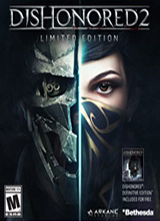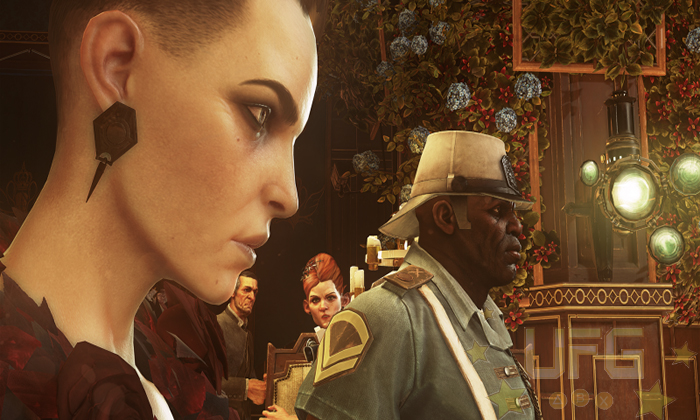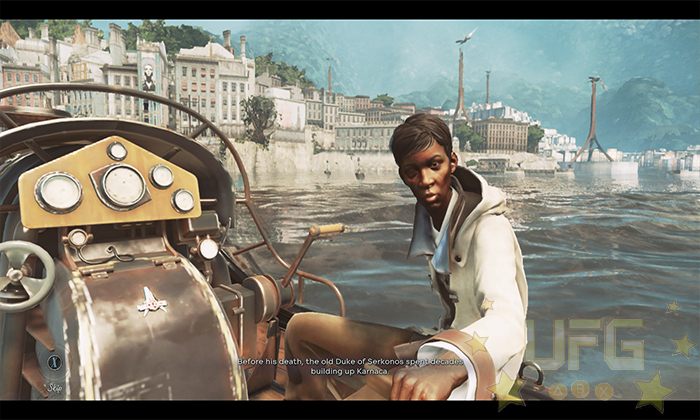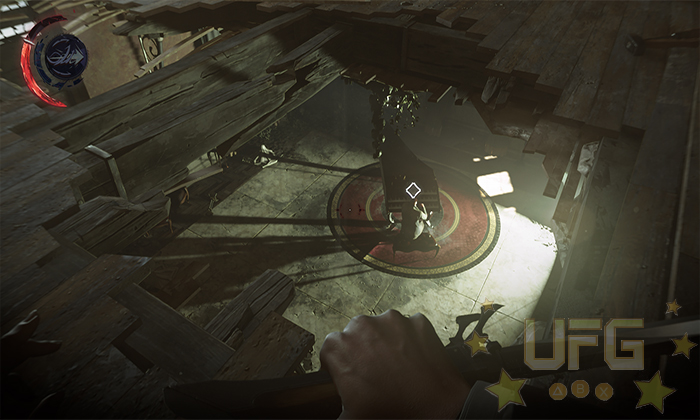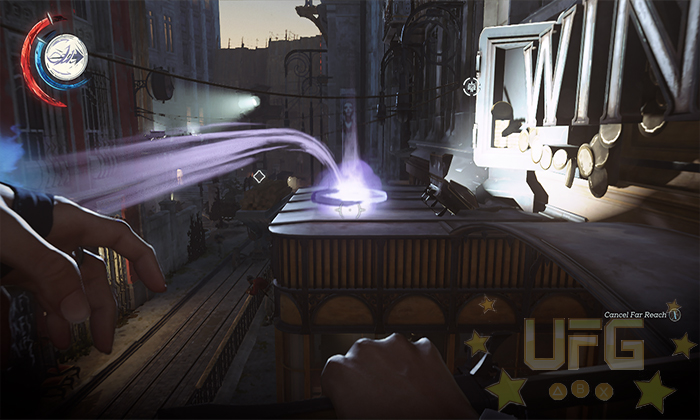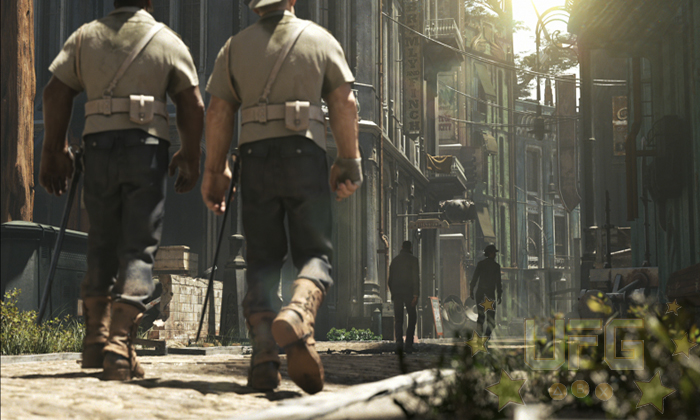Dishonored 2
There is a very good chance that I am the only person who doesn’t believe a sequel needs to be better than its original work of art. I feel that, as long as things progress in a way that allows for meaningful growth amongst the main characters, then everything is ok. Of course, that’s not to say I don’t enjoy a good upping of the ante. It just means that creating more of the same doesn’t automatically equal a failed attempt at something great.
Dishonored 2 takes place fifteen years after the events of the first game. Emily Kaldwin has been restored to the throne in Dunwall and her father, Corvo Attano, acts as her bodyguard and mentor. For the most part, life has been good to these two. Emily is doing her best to act as a proper Empress despite loathing the politics that comes with such a position. She’d much rather spend time amongst the people like an ordinary person or continue her secret training with her father. Corvo, on the other hand, is content with his station as it’s the easiest way to protect Emily from would-be assassins. Even though they aren’t living in dire straits like before, recent events have proved a bit concerning. Someone calling themselves the “Crown Killer” has been murdering anyone who speaks out against the Empress. This of course has lead people to believe that Emily has put a price on the heads of her detractors…
Things really take a turn for the worse during a ceremony to honor Emily’s mother, Jessamine. As things were about to get underway, a witch named Delilah Copperspoon* crashes the party. She tells everyone that she is Jessamine’s half-sister and true heir to the throne, right before staging a coup with some of Emily’s guards. Her loyal forces drop like flies after succumbing to stabs in the back. Even Corvo fails to put up a decent fight. In mere moments, Emily’s world is again turned upside down. What happens next differs slightly depending on which character is chosen to lead the narrative. I picked Emily, which resulted in me being knocked unconscious as Corvo is turned to stone.
Obviously, our hero of choice is forced to flee Dunwall; with the royal guard cutting down anyone aligned with Emily and subjects who think she caused the deaths of political rivals, there’s no safe haven in the city. Thankfully, an old friend of Corvo just happened to be visiting that day. Using the skills learned from her father, Emily makes her way to this friend’s boat before heading to the city of Karnaca. The good news: Emily is somewhat safe. The bad news: Karnaca is just as corrupt as Dunwall used to be.
From here, the plot unfolds like it did in the first game. The player will have to deal with Delilah’s co-conspirators – either by using lethal force or some other, morally sound way – before heading back to Dunwall. Upon doing so, they’ll slowly learn how things came to be as they are now. Secret meetings, dark experiments, black magic – these surface level encounters do a decent job of explaining what’s going on. That said, players who delve deeper to really understand the motives of each character will be rewarded with some of the most interesting lore this side of a Tolkien novel. Arkane Studios should be commended on their efforts to make Dishonored’s world a living, breathing, yet horrible place for gamers to visit.
While most of the plot presented is acceptable, I have some reservations when it comes to how Emily/Corvo’s immediate troubles were handled. The issue with following the previous game’s formula is that this isn’t the previous game. Corvo was locked away for six months after being accused of killing Jessamine. When he’s finally freed by a loyalist group, he learns that the political landscape has changed. Certain people have come into power which affected the wellbeing of those living in Dunwall, including that of a young Emily. His motive for revenge wasn’t just to get back at those who framed him but also to clear the way for his daughter to take the throne; if any of these people where left in a position of power, they could pose a threat to her like they did her mother. So it made sense for Corvo to go after these particular people before ultimately challenging the current rulers of Dunwall.
This set up doesn’t work a second time around. Sure, there are people in high places who wanted to place Delilah on the throne. But to go after them instead of Delilah initially felt like a waste of time. For one, very little time had passed since the coup. Anyone who had ascended to a seat of power wouldn’t have been able to establish a strong grip on the position. Not everyone was loyal to Delilah as those outside of her circle barely knew who she was. Taking down her friends in Karnaca wouldn’t move Dunwall’s political needle in anyway. And even if it did, our heroes don’t take advantage of these situations. The best example I could give is how Emily handles the Crown Killer. After finding proof that she had nothing to do with those murders, she goes back to hunting the other people on her list. At no time did she use that information to prove her innocence.
The other thing that made this set up bothersome was the weak cast of characters. I counted a total of three adversaries that actually had an interesting persona. Most seem to be just there as a place holder, their past giving’s being more intriguing than the person I’m actually hunting; a Duke who the game says is vile is shown to be rather tame upon meeting. By comparison, when I learned more about Delilah’s background, I was all the more disappointed. There is so much to her story, that when I put her next to these blank slates, I felt robbed. Robbed of a noteworthy enemy, a charismatic rouge, or a greedy scoundrel. The archetypes are there, they just aren’t fully utilized.
There are some standout encounters here and there though, especially in the last third of the game when the truth really starts to manifest. One thing I have to note is how the story changes based on your actions. Just like in the first game, if you kill everyone in sight, you’ll increase the world’s chaos. Taking a non-lethal approach will of course do the opposite. Things change depending on the overall level of chaos. Dialogue between characters will change, people will become more or less hostile, and there will be more bloodfly infestations (more on them later). If you’re looking for a positive outcome and a safer environment, low chaos is the way to go. As a game mechanic, I still feel like I did when I reviewed the first Dishonored. Although an increasingly dark and sinister environment is an interesting story element, it almost negatively impacted the gameplay; heightened chaos meant much greater difficulty. Basically, the game subtly pushes you to be good while promoting a “do it your way” approach. It would have been nice to have the option of being bad or good without impacting the difficulty overall.
With all the different choices it’s possible that a better explanation of the events was present. Maybe the lack of relevance for much of the early parts of my first playthrough was based on my choices as Emily. Then again, I didn’t see much difference when I played as Corvo (I didn’t complete the game with him like I did Emily though). Besides providing reasons to start a new campaign, the open story did give reason to add interesting gameplay elements. Or rather, Arkane was looking to bolster the options seen in the last game and provided a multifaceted story to help in that regard. Either way, there’s a lot to like here despite who you play as.
Emily doesn’t start off with the best powers. Her “Far Reach” ability, while similar to Corvo’s “Blink”, isn’t as good thanks to the fact that guards can see her pulling herself across a room; Corvo actually teleports, making his movements harder to track. Once it’s upgraded though, Far Reach proves more useful. It goes from pulling Emily around to pickpocketing important items from NPCs at a distance. It even allows her to grab enemies and fling them back towards her to either kill or subdue. Then there was “Domino”, a spell that connects multiple enemies together so that whatever happens to one happens to them all. Using both abilities in tandem made clearing densely guarded areas an easy feat. I’d link a couple of guards together, pulling one over to me for a choke hold, which resulted in room full of unconscious soldiers.
These supernatural powers made way for some serious water cooler moments. Though, the shining star in my eyes had to be the hand to hand combat options. New to Dishonored 2 is the ability grab an enemy after a parried attack. From here you can put them in a choke hold and knock them out. What this means is that, if you’re seen by an enemy and are forced to fight them, you don’t have to kill them. Every stealth-based game that promotes non-lethal options going forward needs to have a mechanic like this or they’ll fail their audience. Period!
Beyond the action, I found Karnaca to be just as fun to explore as Dunwall was. Due to city position on the coast, a lot of its power comes from windmills. The strong winds often caused storms, blanketing the area with dust which alternated between helping or hindering my ability to sneak about. Some buildings have been condemned due to bloodfly infestations. These deadly bugs lay eggs in dead bodies, increasing their numbers whenever a foolish person tries to loot these decrepit places. For the player, however, these places could be valuable areas to explore. The lack of security makes them a great choice for circumventing guard posts and walls of light – gates that block access to more secure locations. Just as long as you don’t make any sudden moves or get too close to a hive, drawing the ire of the bugs.
The dusty streets of Karnaca allowed for multiple routes to and from a mission’s location. Once there, you were greeted with more history – some noteworthy events may have taken place there years prior, coloring how the place is currently used. Like The Clockwork Mansion, which is easily one of the more fascinating levels featured here. Pulling certain levers throughout the mansion will cause your immediate soundings to literally transform. Stairs will fold and collapse into the floor, walls will rotate away, and large fixtures will slide across the room to make way for something else. None of this is done via a cinematic either. You can walk into these spaces, descending or ascending along with the movable parts of the room. These transformations are needed to solve puzzles but just from a visual perspective, it was quite fascinating.
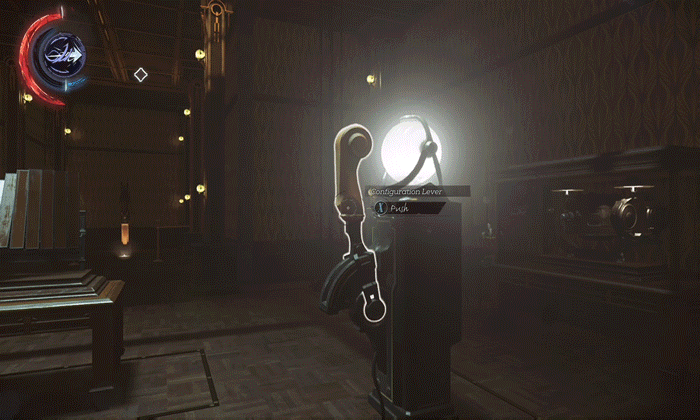
Speaking of how things look, Dishonored 2 is a bit of a mixed bag visually. On one hand the stylized characters and environments are lovely. I especially like the soft, pastel like colors that border dangerously close to being muted. On the other hand, the game seems to have difficult time dealing with the finer details. Textures will often bleed onto objects as you approach them. Look away for a second and then back and you’ll notice they’re missing again. In some places, these details wouldn’t load in at all. What I found most odd was the prioritization of certain “objects” over others. The ocean never lost its luster, looking like a moving oil painting. Emily’s hands however looked rough for most of the game; not rough like she’s had a difficult life but rough in terms of the anti-aliasing. Something you saw all the time was somehow inferior to something you only saw on the way to a mission.
All and all, Dishonored 2 is a good game. The gameplay is just as engaging as before, the additions to certain mechanics fuels this aspect. It does have some rough edges though. Not so much in how it shares the original game’s DNA – that I’m totally fine with. It’s in how the story is written, which narratives are initially emphasized, and how many memorable characters are present. It’s true that Emily’s character developed over the course of the game, but a lot of her growth was tied to the level of chaos instead of any meaningful encounters with other characters. What resulted was a plot that felt a little lopsided at times. And while I wouldn’t go as far as saying that this sequel wasn’t needed (I was mostly entertained), it didn’t sell me on its relevance…not completely.
*Delilah Copperspoon was actually introduced in the Brigmore Witches DLC for the original Dishonored. You don’t have to play that expansion to understand what’s going on, currently. It does help, however, to clear up a few things about her past.
Gameplay:
8
The entertaining stealth mechanics help to provide an enjoyable experience. Plot wise, the game could have been much better though.
Graphics:
7
The stylized world and pastel colors really work well together. Too bad the finer details were lost during production.
Sound:
10
The voice work and music were great.
Replay Value:
8
Emily and Corvo’s journeys are different enough to warrant a second playthrough. The chaos system and different story threads also help in this regard.
Final Score:
8.2
